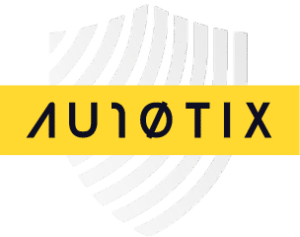Document fraud has far-reaching, devastating consequences for businesses and individuals. It’s one of the easiest ways for criminals to gain financial benefit. With new technologies like advanced AI lowering the barriers to criminal activity, it’s easier to forge, counterfeit, and doctor sensitive documents.
This guide is a comprehensive look at what document fraud is. You’ll learn how it impacts various industries and how tiers classify it. You’ll also discover the multiple forms it takes, how the law plays a part in combating fraud, the crucial role technologies play in stopping document fraud in its tracks, and more.
How to Spot Document Fraud

Look for missing or altered numbers

Check for altered text or images

Look for data entry errors like incorrect dates and names

Examine document for unusual formatting

Be weary of logo changes (especially on official-looking documents)

Check the quality of the document (fakes use poor quality materials)
What is Document Fraud?
Document fraud encompasses a range of illegal activities that include the creation, alteration, duplication, counterfeiting, or forgery of official documents with the intent to deceive.
Document Fraud in Various Industries
Document fraud, by nature, is perpetrated for gain, making it widespread across industries. Here’s how document fraud occurs and the adverse impact it has in different industries:
Banking and Financial Services are prone to a high volume of fraud designed to gain access to funds. Examples include using fake documents for loan applications or credit card fraud, which cause financial loss and compromise customer trust.
Professional Services (Accounting, Legal, Finance) experience billing fraud where fraudulent invoices or financial statements are used. Billing fraud leads to financial losses and damages the industry’s credibility.
Manufacturing: Fraud can take place in several ways in the manufacturing industry. Typical schemes include equipment theft using fake requisition documents, illegally acquiring intellectual property with false documents, or falsifying laboratory reports to circumvent legislation.
Retail: Retailers face document fraud in the form of counterfeit receipts or warranty claims. An increase in either form of fraud affects stock levels, causing shrinkage that ultimately impacts a retailer’s bottom line.
Government and Public Administration: Fake identity documents are often used to gain illegal access to services or benefits that drain public resources.
Insurance: Fraudsters use fake documents for false insurance claims, impacting the industry through financial loss and increased premiums for honest customers.
Education Sector: Fake diplomas or certificates are issued, undermining the credibility of educational institutions and devaluing legitimate qualifications.
Real Estate: Perpetrators may forge the identity of property owners to sell or mortgage properties without the actual owner’s consent, as well as alter deeds and titles.
Book a Demo
Give your business the boost of a fully automated, KYC process. No geographical limits and fast, frictionless onboarding verification processes enhance customer’s experience.
Types of Fraud Documents
Document fraud can take various forms, including the use of fake imagery. Here’s a breakdown of each type:
Blank Documents
Blank document fraud is a nuanced form of document fraud where blank but official-looking documents or those with authentic signatures and seals are misused. It starts with acquiring or stealing such documents, which could range from blank checks to pre-signed official forms. Fraudsters then falsify these documents by inserting false information and leveraging the original genuineness or authentic signatures to lend the falsified information undue credibility.
Blank document fraud is insidious because it exploits the trust in official documents, making detection and prevention challenging but essential.
Camouflage Documents
Camouflage documents are fabricated to mimic official documents. They often feature names of issuing authorities that either do not exist or do not legitimately issue such documents. Their primary purpose is to deceive or defraud, exploiting the perceived authenticity of official documents for scams, identity theft, and other deceptive activities.
Forged Documents
Forged documents involve the intentional alteration of genuine documents to incorporate false information. This can include changing dates, names, figures, or other vital details in an official document. Forgeries for financial statements, identity papers, legal contracts, and educational certificates can be created. Essentially, any document with significant value or authority is susceptible to forgery.
Image Fraud
Image fraud is focused on manipulating images of documents rather than the documents themselves. It involves altering photographs or scans of key documents like identification cards, financial records, or other official paperwork.
Fraudsters use graphic processing and deep fake engineering techniques to modify critical elements in document images. Elements altered include text, dates, and photos, making it possible to create a misleading representation of the original document.
Invoice Fraud
Invoice fraud typically involves imposters posing as legitimate vendors or suppliers who issue fake invoices, tricking customers into paying for non-existent goods or services. Often, fake invoices include inflated monetary amounts that cause customers or businesses to overpay.
Invoice scams can include seemingly authentic invoices from non-existent companies that mimic trusted suppliers. These scams take advantage of compromised email threads to enhance their credibility. Under the guise of a legitimate entity, duplicate invoices can be sent for multiple bills for the same product or service, hoping each invoice gets paid without detection.
Read more about Fraud prevention >
Counterfeit Documents
Counterfeiting is characterized by the unauthorized creation of duplicates of official documents, meticulously crafted to look as real as possible. Counterfeits encompass a wide array of items, from currencies and personal identification documents like passports and driver’s licenses to legal certificates and financial records.
The methodology behind this fraud is sophisticated, with criminals using advanced technologies to accurately mimic the physical and security aspects of the original documents. Because most documents typically counterfeited include security features, criminals go to extreme lengths to replicate paper quality and printing techniques. They also mimic security features such as holograms and watermarks to make the counterfeits nearly indistinguishable from the genuine articles.
Identity Theft
Identity theft usually begins with the theft of personal information such as names, addresses, social security numbers, and financial data, which are then unlawfully used. Stolen information is utilized to create or modify IDs, passports, credit cards, or bank statements. Once forged, these documents are used for illegal activities, including opening bank accounts or applying for loans.
The Four Tiers of Document Fraud
Document fraud can be classified into various tiers, each representing different levels of sophistication and methods fraudsters use. Tiers range from one through four, with Tier One being the most complex form of fraud and Tier Four the least. Here is an overview of each:
Tier One
Tier One document fraud represents the most sophisticated form of fraudulent conversion activity because it is based on acquiring and misusing genuine blank documents. Scammers obtain blank official documents from supply chains, banks, or government offices. Because these documents are authentic and unaltered, it is harder to identify fraudulent activity.
Tier Two
Tier Two document fraud, a step down in complexity from Tier One, still poses considerable challenges in detection and prevention. It relies on simple forgery or alterations of existing documents. Fraudsters modify or create false documents using easily accessible tools and technology, such as changing information on an ID card or fabricating bank statements.
Tier Three
Tier Three document fraud usually occurs in the form of identity theft. A victim’s personal details are used without their consent, typically to obtain financial gains or unauthorized services. Unlike the more intricate Tier One and Tier Two frauds, Tier Three frauds are simpler to execute and don’t demand advanced skills or extensive resources.
This level of fraud is not limited to well-organized criminal networks. It can be committed by many individuals, making it more commonly perpetrated. Tier Three fraud includes online scams, credit card fraud, phishing attacks, and other deceptive practices that exploit stolen or fabricated identities.
Tier Four
Tier Four fraud represents fraudulent activity generally considered less sophisticated than higher tiers. It commonly appears in everyday transactions and only sometimes demands advanced technical know-how for its execution or detection. Basic in nature, it often involves simple acts of misrepresentation or misuse of documents, like altering personal details on documents that are not highly secure.
Red Flags in Fake Documentation
Identifying document fraud involves scrutinizing various elements of a document to detect anomalies. Key indicators include:
- Missing or Altered Numbers: Genuine documents have consistent, sequential numbering. Look for missing or inconsistent numbers, which might indicate tampering.
- Data Entry Errors: Misspellings, incorrect dates, or other data entry mistakes in names or other critical information can be red flags, as genuine documents typically undergo thorough checks.
- Altered Text or Images: In IDs and other documents, photo alterations, names, or other details are common signs of fraud. Changes might be subtle but detectable upon close inspection.
- Unusual Formatting: Look for fonts, text alignment, or spacing inconsistencies. Official documents usually have a standard format that is rigorously followed.
- Logo Changes: Logos are often intricately designed and hard to replicate. Any discrepancies in the logo compared to an authentic document can indicate fraud.
- Physical Examination: For physical documents, feel the paper’s quality and check for watermarks or other security features that are difficult to replicate.
Detecting document fraud requires a combination of detailed visual examination and awareness of the characteristics of genuine documents.
Read more about How to spot a Fake ID >
Document Fraud Laws
Document fraud laws play a crucial role in addressing document-related crimes. Laws not only aim to penalize fraudulent activities but also serve as a deterrent, promote awareness, and encourage the implementation of preventative measures across various sectors and achieve these goals in several ways.
Legal frameworks are continuously updated to address new forms of document fraud, especially those emerging from technological advancements. Today, the advent of AI has made document fraud harder to crack down on, and for legal measures to remain effective against evolving fraud tactics, like sophisticated forgeries and online scams, laws must grow to include new ways to classify and prosecute fraud.
Incentivizing technological advancements is a major development, given the rapid evolution of technologies that make it easier to perform fraud. Document fraud laws enable innovation in fraud detection technologies.
By championing international collaboration by creating standardized legal frameworks that allow for information sharing, countries can quickly and easily identify fraud within and across borders.
Technology Solutions
A core contributor to the increase in identity theft is the ease at which fake identities can be created with the help of advanced technology like AI.
Several technologies can be used to address AI-produced fakes. They may prove ineffective on their own, but when deployed as a layered solution, they can be hard to beat. The technologies include:
Optical Character Recognition (OCR) Software: OCR technology converts different types of documents, such as scanned paper documents, PDF files, or images captured by a digital camera, into editable and searchable data. This is crucial for detecting document alterations.
Machine Learning and Artificial Intelligence (AI): AI and machine learning algorithms analyze documents for inconsistencies, such as font discrepancies, layout irregularities, or altered graphics. These technologies are especially effective as they learn from vast data to improve detection accuracy.
Biometric Verification: Biometrics uses biological characteristics, like facial recognition or fingerprint matching, to verify the authenticity of identity documents. As a tool, it is instrumental in digital onboarding and security processes, as biometric characteristics are more challenging to mimic.
Blockchain Technology: Blockchain offers a secure and immutable ledger, ensuring that once a document is stored, it cannot be altered without detection.
Fraud Detection Software: Specialized software tools scan documents for known fraud patterns. Often paired with or driven by AI, they use databases of fraudulent documents as references to identify fake, with more sophisticated solutions preventing large-scale fraud in real-time.
Preventing Fraud in Documents
Preventing document fraud involves a combination of awareness, technology, and best practices. As with the use of a multi-layered technology solution, it’s recommended that you apply as many of the following methods to help you fight document fraud:
Learn to Identify Authentic Documents: Familiarize yourself with the features of genuine documents you frequently encounter, like bank statements or IDs, to spot forgeries.
Invest in Advanced Technology: Leverage technologies such as OCR, AI, and machine learning to detect document inconsistencies and anomalies.
Use Strong Verification Processes: Establish comprehensive verification processes, especially for critical documents. This includes checking watermarks, holograms, and other security features.
Train Employees: Regular training for employees on the latest trends in document fraud and how to detect them is crucial. By training and providing documented best practices, teams stay aware of possible fraud attempts and are equipped with tools and processes for handling them.
Educate Customers: Fraud begins at an individual level, and with the right awareness initiatives, it can be limited and prevented. Invest in programs that teach customers to tell if their identities have been stolen or compromised to create a more privacy-conscious customer experience.
How AU10TIX Detects Fraud
AU10TIX has been at the forefront of document authentication for over 20 years. We built the technology that provided identity intelligence for airports and border control around the globe. Over time, our experience led us to develop innovative, fast, and accurate methods for automating the process in a digital world.
Today, we help the largest brands authenticate their customers quickly, safely, and securely. Our solutions include:
Document Authentication: We verify identity documents such as passports, driver’s licenses, and national IDs using advanced AI algorithms to scan and analyze these documents for authenticity, detecting signs of forgery or manipulation.
Meet our document verification service >
Biometric Verification with Selfies: Our platform leverages biometric technology to compare a photo on an identity document with a selfie taken by the user. We can ensure that the person presenting the document is the legitimate owner, making it harder for fraudsters to impersonate others.
Data Extraction: We extract data from documents quickly and accurately, reducing the risk of manual errors in data entry that fraudsters could exploit.
Fraud Detection Algorithms: Our in-house, AI-powered system is trained to recognize patterns and anomalies associated with fraudulent documents or activities. It can detect subtle inconsistencies that might be overlooked by human review, such as discrepancies in fonts, holograms, or security features.
Deepfake and Synthetic Fraud Detection: Our enhanced fraud detection capabilities combat emerging threats like deepfake videos and synthetic identities. Using built-in Diffusion AI technology significantly increases detection rates for synthetic fraud, contributing to a more robust defense against evolving fraud tactics.
Wrapping up
Document fraud presents a complex challenge in various sectors. With varying degrees of sophistication, fraudsters adapt their methods, leveraging digital advancements and exploiting potentially catastrophic vulnerabilities for individuals, businesses, and government agencies.
The key to combating document fraud lies in a multifaceted approach. Organizations must commit to technology and education. Employing a multi-layered solution that includes advanced technologies like AI, machine learning, biometrics, and robust verification processes for detection will help keep fraud at bay.
When paired with a well-designed, ongoing awareness program about fraud risks, consumers can identify fraud attempts sooner, helping create a more secure and safe ecosystem for all.







